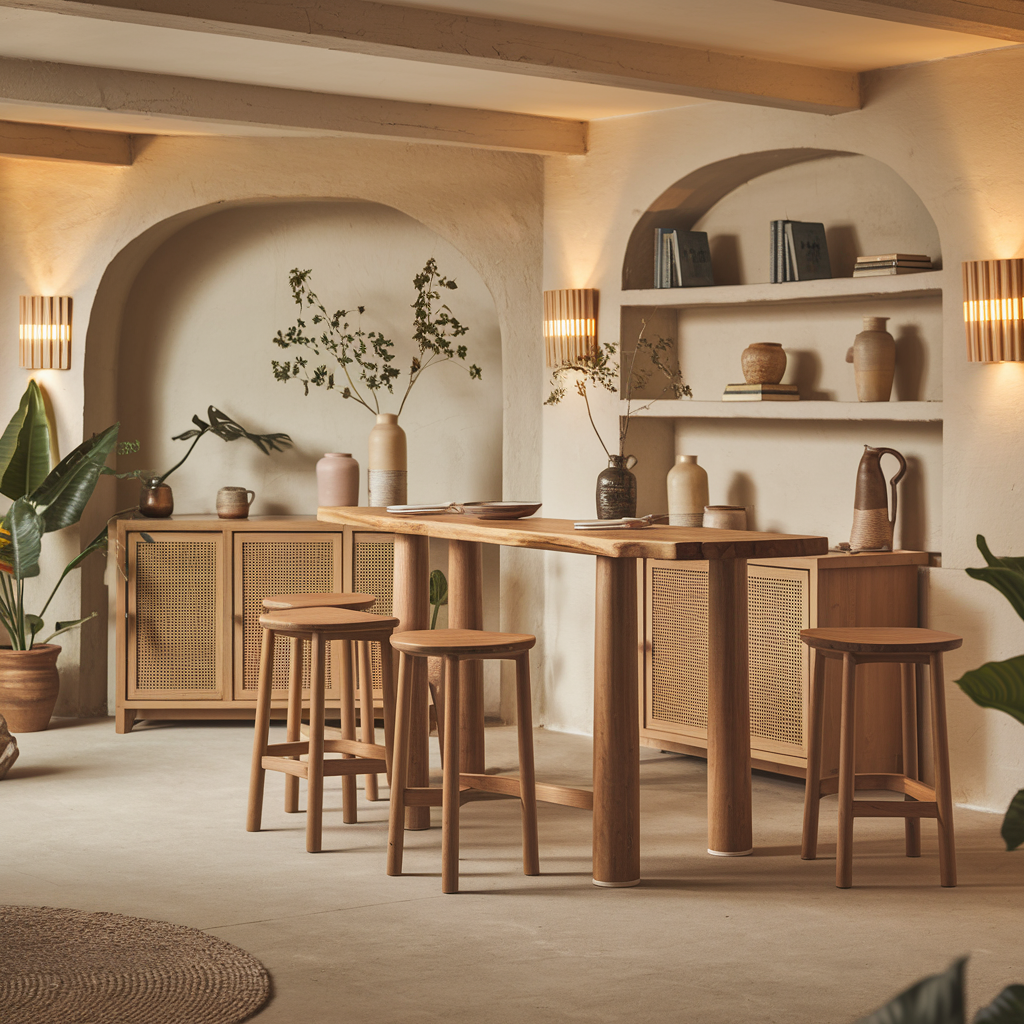Bar Tables Inspiration & Tips
How to Pair Bar Tables with Bar Stools and Buffets
For more detailed insights, visit our dedicated guides such as Bar Tables Inspiration & Tips.
Bar tables as the foundation
The bar table anchors your setup. Its dimensions dictate seating and flow, and its design sets the tone for the rest of the furniture. A counter-height bar table is versatile for kitchens and everyday dining, while bar-height tables are better suited for entertaining areas with a more social, stand-and-sip atmosphere.
Popular shapes
- Round: Smooth flow, ideal for conversations and compact spaces.
- Square: Balanced and space-efficient, especially in corners.
- Rectangular: Best for larger groups, narrow dining zones, or against walls.
- Oval: Combines capacity with softer edges for safe traffic flow.
Pairing with bar stools
Bar stools not only need to match the height of your table but also its design language. Aim for 10–12 inches between seat top and table underside to ensure comfort. Styles can range from minimalist metal frames to rustic wood or cushioned upholstered options.
Style and function
Backless stools tuck easily under the table and save space, making them perfect for apartments. Stools with backs and arms offer better support for longer meals or gatherings. Upholstered seats can soften the look and tie into other fabric accents in the room.
Materials and finishes
Choose finishes that either match or complement your bar table. For example, a walnut bar table can pair seamlessly with stools that have walnut frames and neutral upholstery. Metal bases with wood tops provide an industrial edge, while rattan stools bring natural warmth.
Incorporating buffets for storage and balance
Buffets or sideboards serve as a visual counterweight to tall bar tables. They also provide storage for essentials like plates, glasses, and serving ware. Placed along a wall near the dining area, a buffet creates a natural station for both functional storage and decorative displays. Explore more options in our buffets collection.
Size guidelines
- Keep buffet height between 36–42 inches to align with your bar or dining table height.
- Allow clearance of at least 24 inches between buffet and table for traffic flow.
- Choose wider buffets in large rooms, or slim versions for compact dining zones.
Styling buffets
Buffets are ideal for showcasing decor like vases, lamps, or art. They can also be styled seasonally, adding warmth and personality to your dining space.
Coordinating colors and finishes
One of the most effective ways to tie your bar table, stools, and buffet together is through finishes and colors. Consistency creates cohesion, while strategic contrasts add depth.
Unified finishes
Using the same wood tone across all three pieces creates a clean, harmonious look. For example, oak bar tables, oak-framed stools, and an oak buffet form a seamless setup.
Mixing for contrast
Combine dark bar stools with a light wood buffet, or a glass-top bar table with a solid wood sideboard, to add layers of interest. As long as one material or finish is repeated across two elements, the trio will feel balanced.
Practical layout tips
Beyond aesthetics, the placement of bar tables, stools, and buffets determines how functional the room feels. Arrange seating so guests have at least 36 inches of clearance for movement. Buffets should be accessible without interrupting the flow between kitchen and dining areas.
For more layout strategies, explore Dining Tables Design & Styling, which offers guidance on circulation, scale, and styling techniques.
Lighting and accessories
Lighting can make or break your bar area. Pendant lights positioned 28–34 inches above the tabletop provide clear illumination without glare. The scale of the fixture should match your table—narrow fixtures for compact tables, broader ones for rectangular surfaces.
Accessories also play a role in unifying the look. Add cushions to stools that reflect colors from the buffet decor. Use trays and glassware to style the buffet in a way that complements the table surface.
Example setups for inspiration
Compact urban apartment: A round counter-height bar table paired with two slim, backless stools. A narrow buffet along the wall offers hidden storage and doubles as a display for decorative accents.
Spacious open-plan home: A long rectangular bar-height table surrounded by six cushioned stools. A wide buffet along the opposite wall provides storage for dinnerware and acts as a serving station for larger gatherings.
In both cases, the relationship between table, stool, and buffet is carefully considered—proving that the right mix enhances both everyday comfort and entertaining possibilities.
Final thoughts
Pairing bar tables, bar stools, and buffets is about creating balance, functionality, and visual harmony. Start with a table suited to your room size and lifestyle, add stools that complement its height and design, and finish with a buffet that provides storage and anchors the setup. For more resources, browse our bar tables collection and return to the homepage to explore complete furniture solutions.

